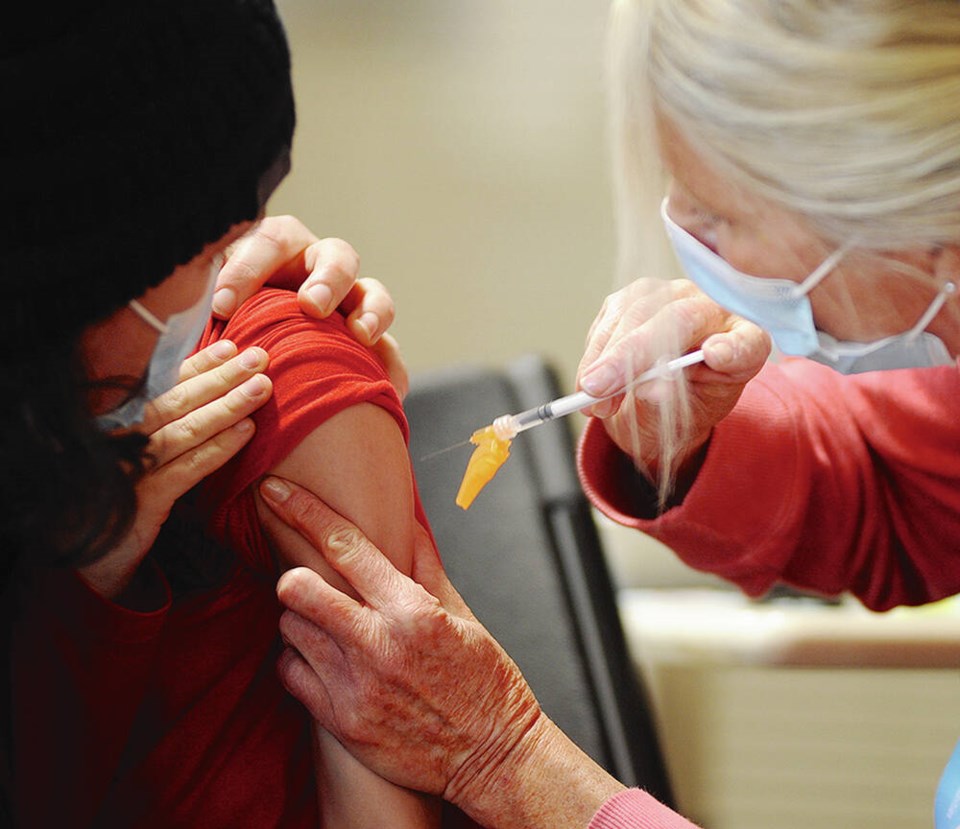A health advocacy group is warning the province that a repeat “tripledemic” of the flu, COVID-19 and respiratory syncytial virus could hit in the fall, obliging schools to take more precautions around masking and ventilation.
Protect Our Province B.C., called PoP B.C., has sent an open letter to Premier David Eby, Health Minister Adrian Dix and Education Minister Rachna Singh offering a five-point plan to ready schools for a possible fall wave of viruses.
PoP B.C. includes retired ôÕѿǨû§Æ°£ÙGeneral Hospital ER physician Dr. Lyne Filiatrault. The signatories to the letter include other organizations such as Safe Schools Coalition B.C., as well as family doctors, nurses, specialists, scientists, clinical professors, an epidemiologist and public health experts.
Filiatrault said leaders have a choice to “do nothing or decide to protect B.C. children, their educators and their families.”
We need to start the school year with masks on and not wait for illnesses to hit children “because bringing back masks after the fact is like braking after the accident,” Filiatrault said.
“Unbelievably, we are approaching the fourth unsafe return to school during the ongoing COVID-19 pandemic,” the letter reads.
B.C. Centre for Disease Control wastewater surveillance data released Thursday for the period July 30 to Aug. 5 show viral loads are stable or “slightly increasing” on the Island and the Interior.
The southern hemisphere, which is in winter, has seen a surge of COVID alongside another severe season for influenza and RSV. Australia and New Zealand’s experiences are often a harbinger of what can happen in the northern hemisphere.
David Eberwein, superintendent of the Saanich School District, said schools are prepared for the fall respiratory season but that does not include a mask mandate. “We continue to monitor our ventilation systems and make sure that they’re running properly and that the filters are changed as per the schedule, and we have a cleaning regimen that’s still ongoing, and masks are optional,” said Eberwein.
Eberwein said all schools in the Saanich district have air circulation gear and filters in teaching spaces, whereas older schools in other districts do not have the same equipment.
“All of our ventilation systems are up to code and they are monitored and maintained on a regular basis,” said Eberwein.
The letter from PoP B.C. says schools are still the major source for COVID-19 transmission, with 70 per cent of COVID-19 infections transmitted to households from children.
PoP B.C.’s five-point plan for schools proposes:
• Better ventilation and air cleaning.
• The return of mask mandates.
• Naming COVID-19 as an airborne infection that spreads like cigarette smoke.
• Widespread distribution by the federal government of rapid antigen tests.
• Early vaccination of children and families against COVID-19.
Tracy Humphreys, founder and chair of B.C. Ed Access, a volunteer group of parents working for equitable access to education for kids with disabilities, said a segment of parents have kept their immuno-compromised children home since the pandemic began and will continue to do so this fall, citing insufficient layers of protection against COVID-19 in schools.
“There are kids who are now going into their fourth year not being able to attend school because it’s just that unsafe for them because they are very medically vulnerable,” said Humphreys.
Other kids have immuno-compromised family members and can’t risk contracting and bringing home potentially deadly viruses, said Humphreys, who lives in Victoria.
Humphreys said the voluntary protocols of wearing a mask, physical distancing, regular hand washing, or kids and school staff staying home when sick have all but disappeared in schools. She would like to see schools again promote layers of protection.
“Realistically, the mask mandates were removed quite early and I don’t see them returning, but mask encouragement would be really nice to talk about in schools and other ways to keep yourself safe,” said Humphreys.
Humphreys is also president of the Victoria Confederation of Parent Advisory Councils in School District 61. She said she’s heard the upcoming respiratory season is going to be intense but has not yet heard related demands from parents.
Pop B.C. said B.C.’s current is too low. Only 16 per cent of children ages six months to four years, and 19 per cent of children age five to 11 are up to date on their vaccine doses, with the rate being 38 per cent in the 12-to-17-year-old age group.
Provincial health officer Dr. Bonnie Henry told the Times Colonist last week the province is preparing to roll out the newest COVID-19 vaccine in September or October. She hopes the flu vaccine will roll out on the same timeline.
The latest formulation of the COVID-19 mRNA vaccine by Pfizer-BioNTech and Moderna is under review by Health Canada. The new formulation will be a monovalent vaccine, consisting of one Omicron strain, likely XBB.1.5.
Last month, the National Advisory Committee on Immunization advised people to get the updated vaccine once it’s released if it has been six months or more since their last dose or infection.
The committee said those who could especially benefit include people age 65 and older, long-term care residents, pregnant people, the immune-compromised, First Nations, Meätis and Inuit community members, and people providing essential community services.
Eberwein said there’s a wide range of opinions COVID-19 protocols but the school district takes its direction from the provincial health officer and regional health authorities.
“Invariably, there will be a respiratory illness in the community this fall in winter,” said Eberwein.
“We are continuing to advise people to stay home because they are not feeling well and to wash their hands regularly but we’re not doing anything extraordinary in terms of other expectations for our school operations unless we are directed by public health or WorkSafe to implement those changes.”
>>> To comment on this article, write a letter to the editor: [email protected]



